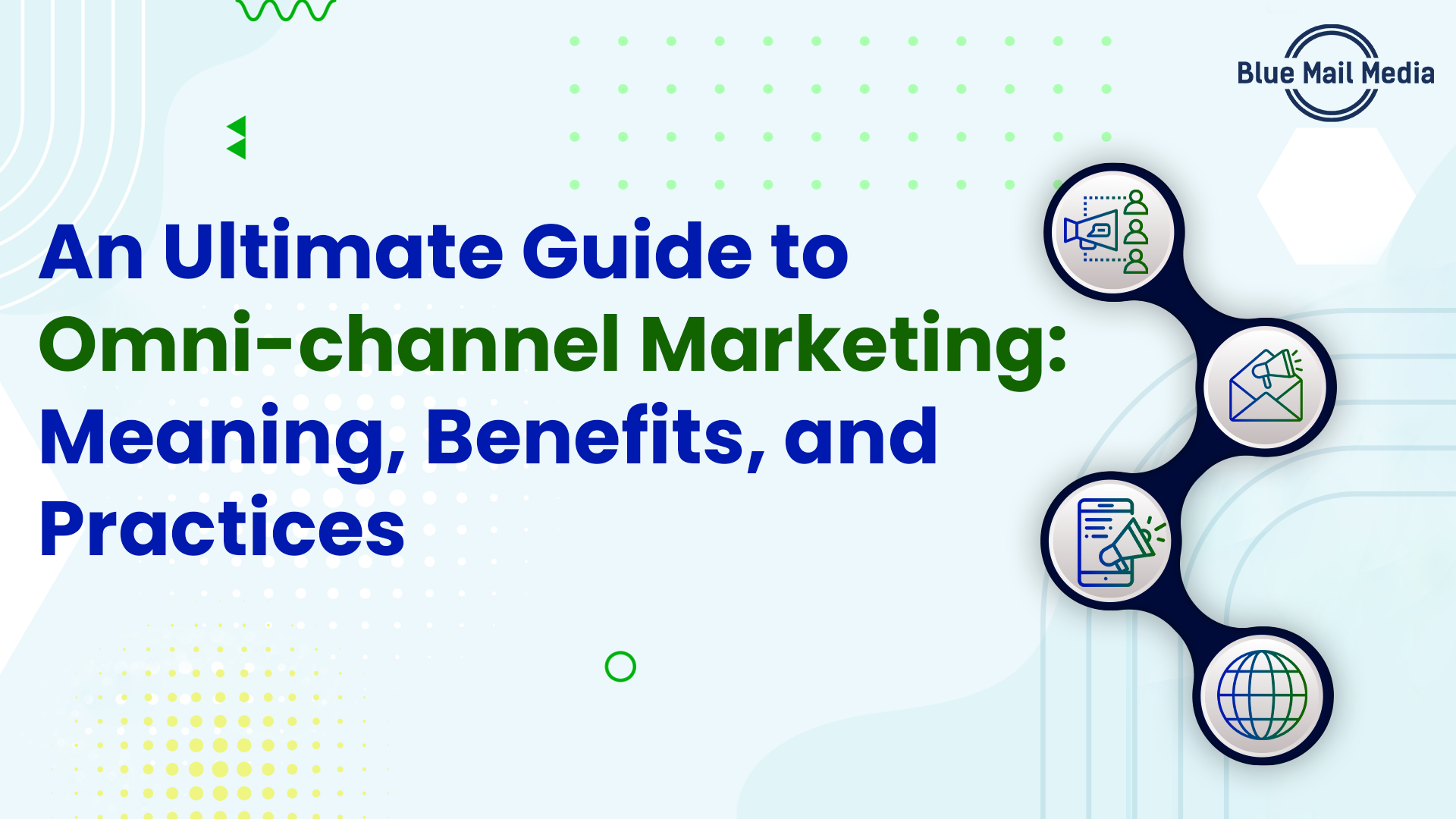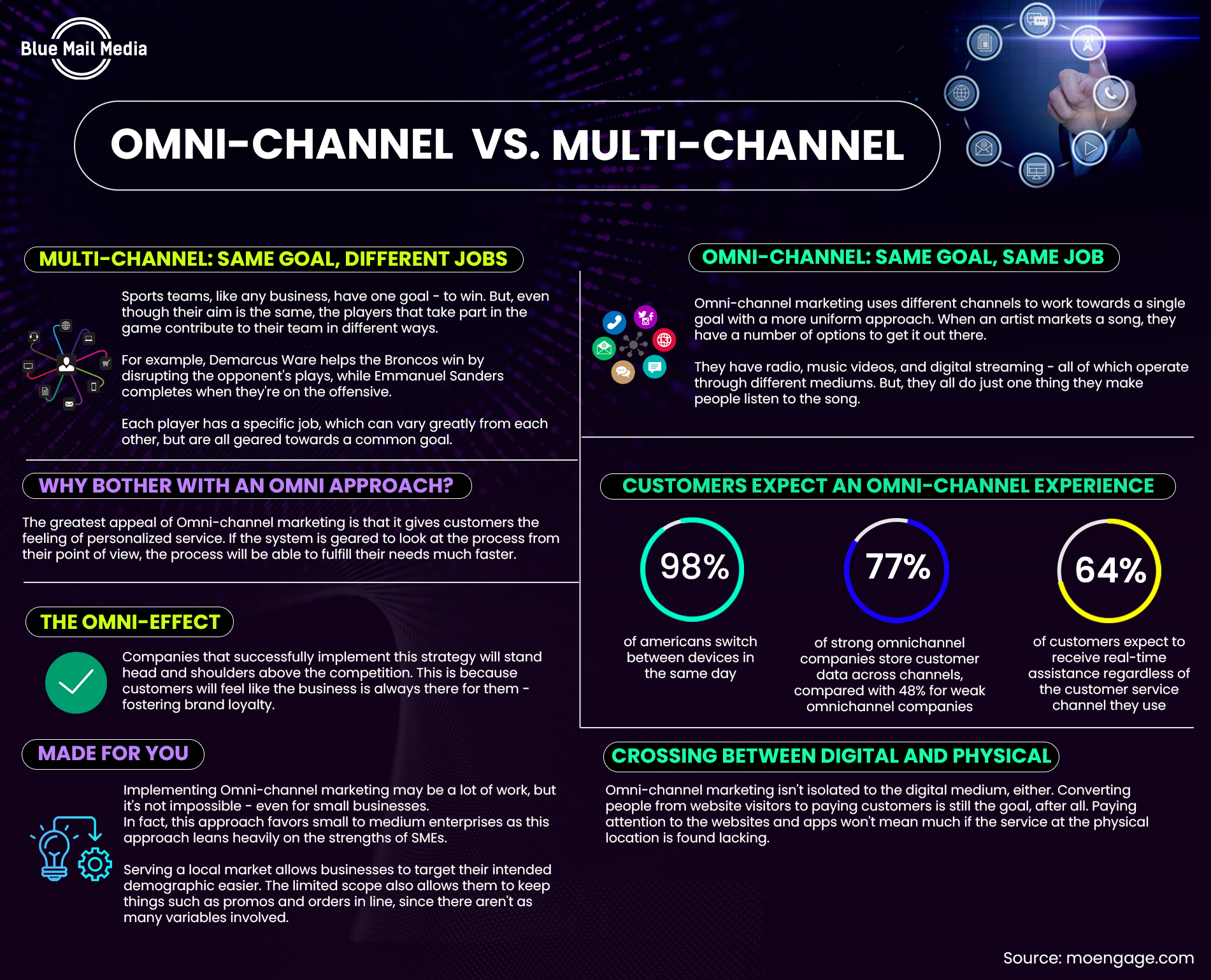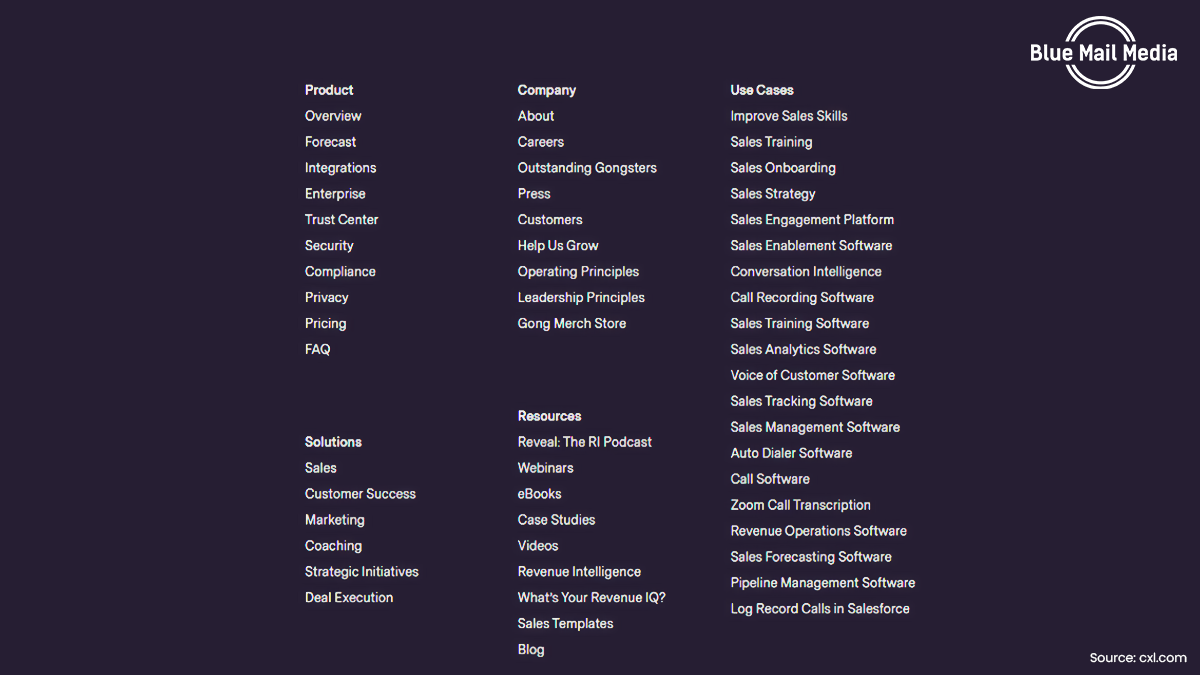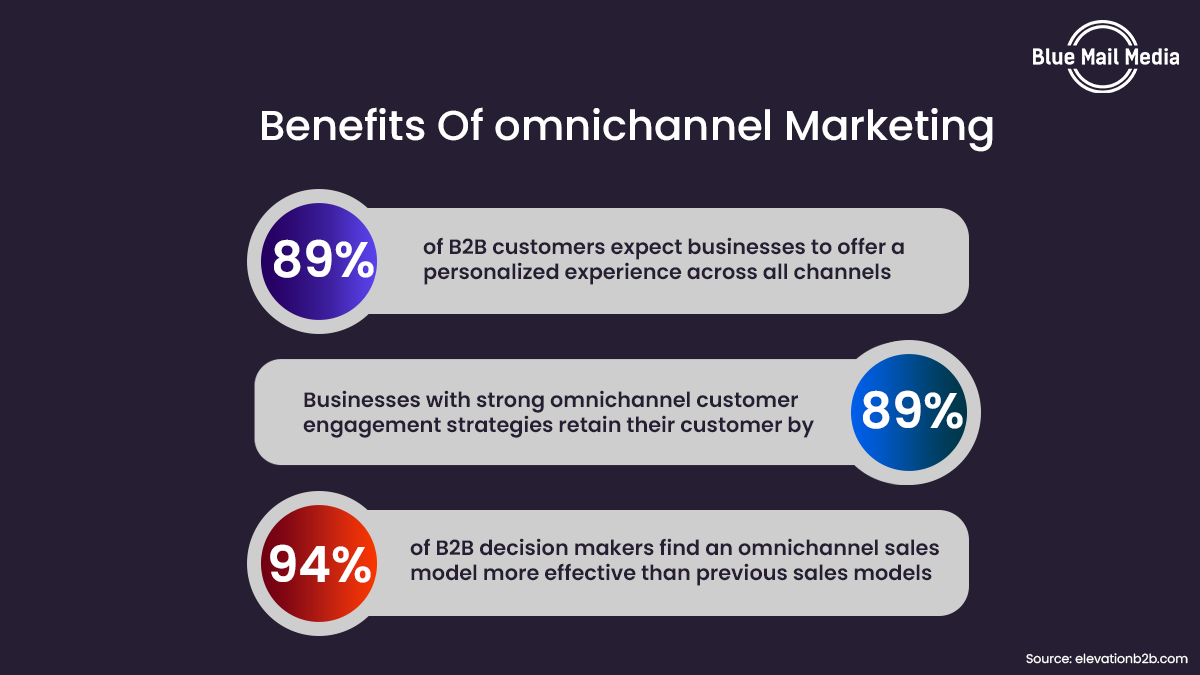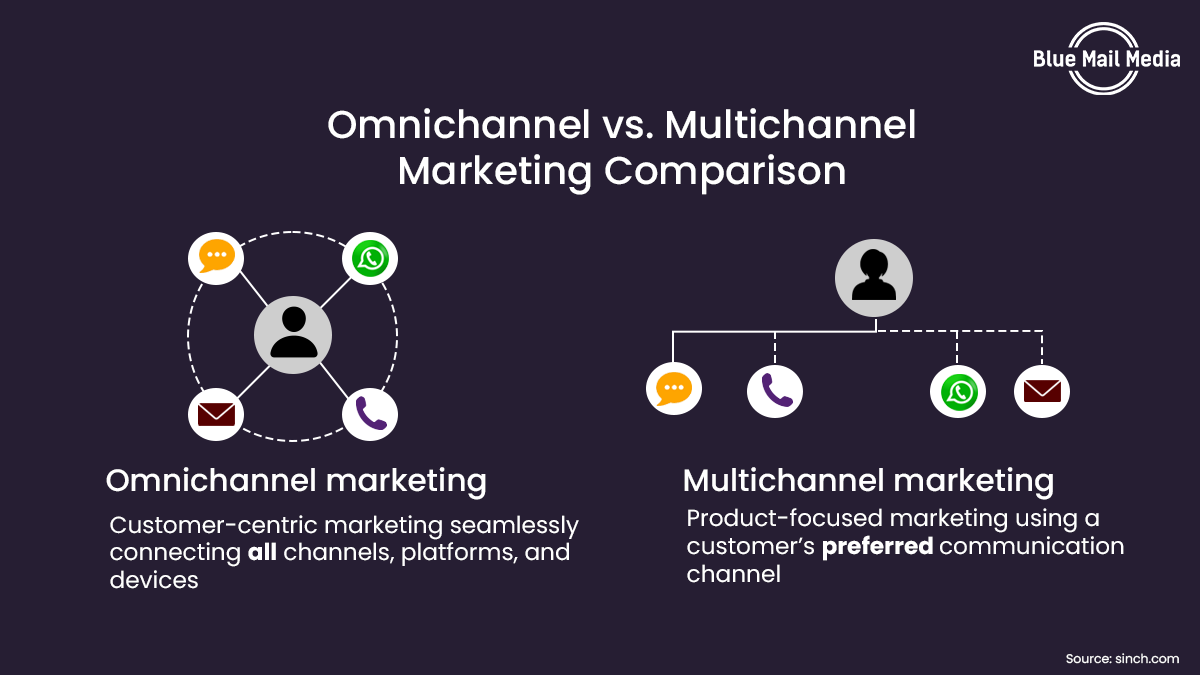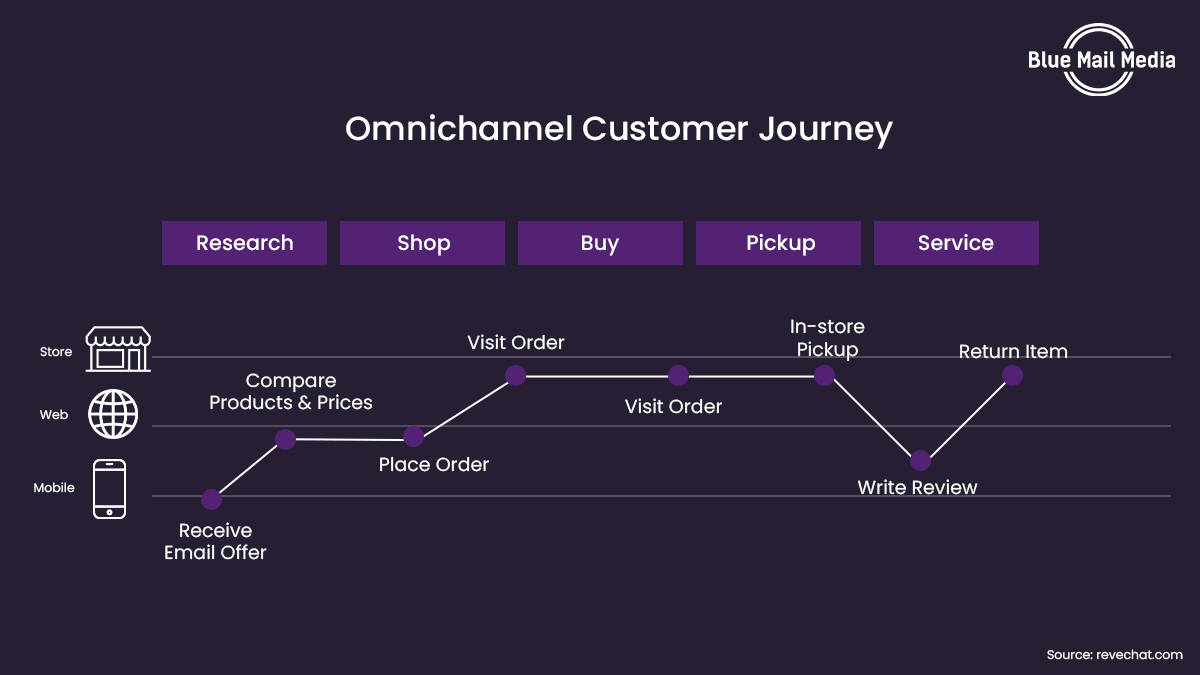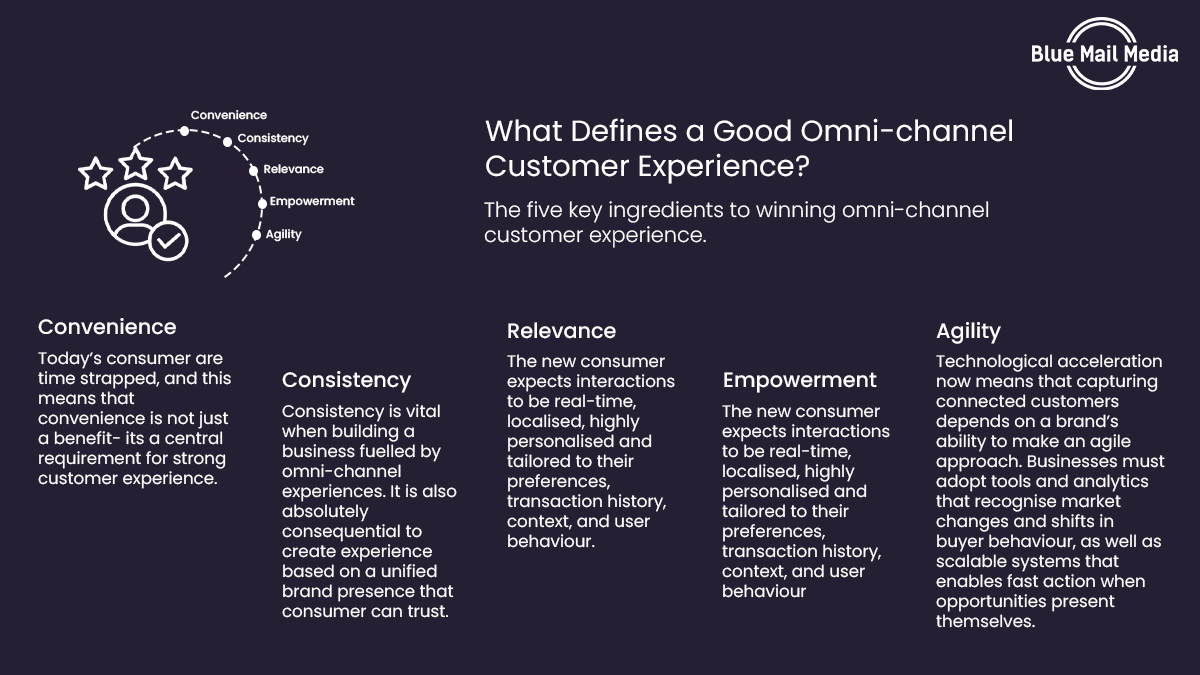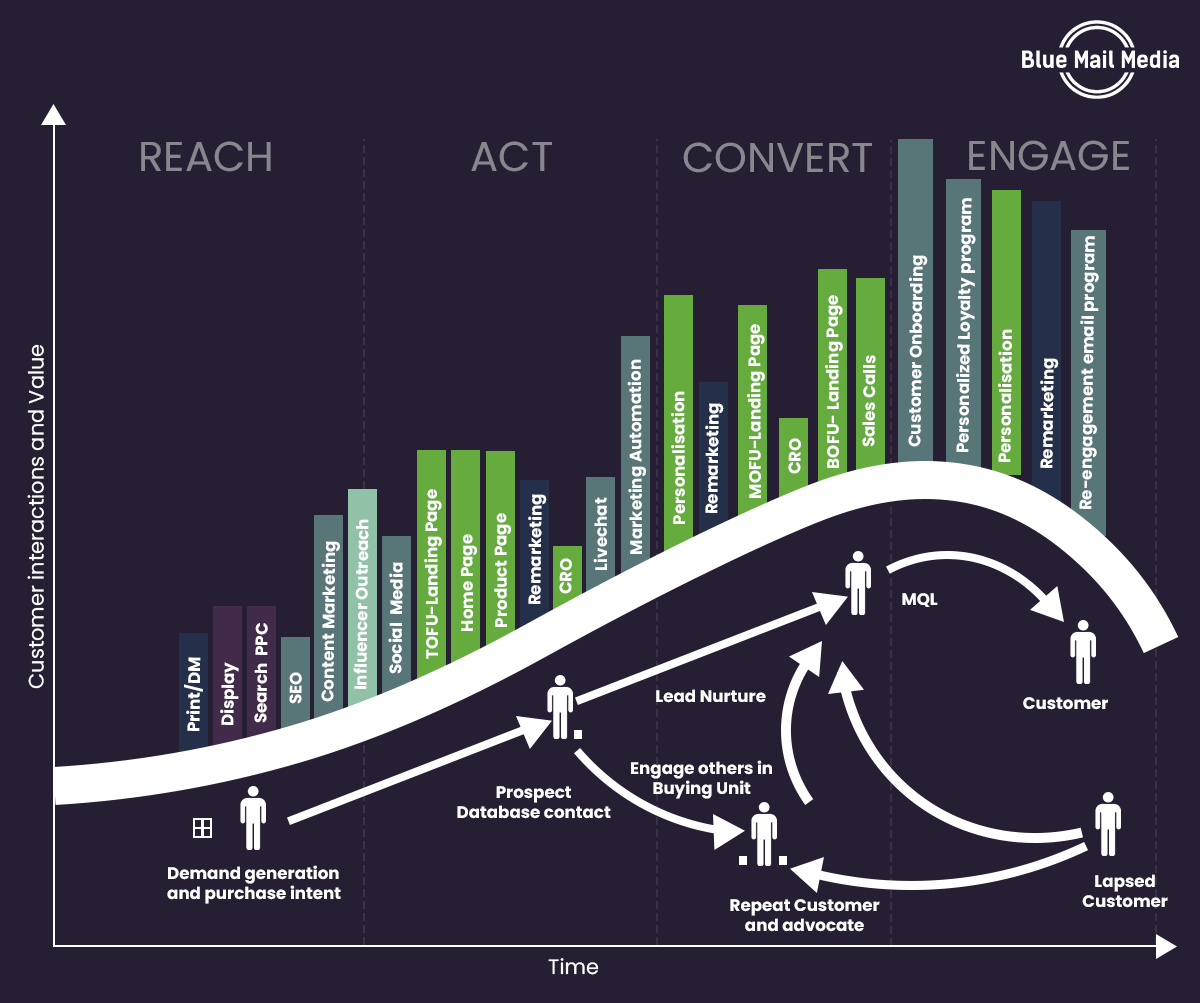In this day and age, where competition in B2B landscape is fierce and personalization is key, omni-channel marketing can yield positive results. Companies which emphasize an omni-channel marketing approach witness a 9.5% year-over-year increase in annual revenue.
For B2B businesses, omni-channel marketing represents the opportunity to track the B2B client’s journey from start to finish – through every communication channel and at every touchpoint – to deliver a personalized experience for higher conversions.
In this blog post, we will explore the ins and outs of omni-channel marketing, including why it is important for your business and how you can build a successful omni-channel strategy.
Defining Omni-Channel Marketing
Omni-channel marketing integrates offline and online marketing channels to deliver prospects a consistent, cohesive, and engaging brand experience across all touchpoints. These channels include email, social media, websites, apps and even physical storefronts.
To put it more clearly, the characteristics that define omni-channel marketing include:
- Personalization at every stage of the buying journey and across all channels
- Reliance on data and analytics to acquire detailed insights into prospects
- Marketing that is informed by past interactions and current needs
- Consistent messaging and brand voice across all communication channels
For a better understanding, let’s take a look at some examples of omni-channel marketing in action:
1. Gong:
Founded in 2015, Gong is one of the fastest-growing SaaS businesses in the world, and its rapid surge is owing to omni-channel marketing. That is built on the simple idea: solving clients’ problems.
In its website footer, you will notice how Gong explains the value of its product with various use cases. These use cases target leaders, sales, executives, and managers – the major groups part of the B2B buying cycle. The brand further targets the same group on the company’s social media and blog, where relevant and informative content is shared.
Content on these channels is informative and engaging, keeping with the brand’s tone and voice. It is further written in the same style (paragraphs and short sentences) with the goal: to help the reader solve their issues and use the software to achieve higher revenue with right customer insights.
2. Beeztees
Beeztees is a B2B supplier of pet supplies with employees and clients across 45 countries worldwide. It deploys a B2B omni-channel e-commerce platform that includes inventory, order information, pricing, and product for retailers. With SAP integration that enables the B2B brand to unlock SAP data to mobile and web applications, retailers can access a real-time inventory of different products. A track and trace feature is integrated into the portal to ensure retailers have a view of where their product ordered is in the supply chain.
Interestingly, Beeztees employees can easily adjust prices, so the prospects always see the right products.
Why Choose Omni-Channel Marketing: Important Benefits
Since B2B executives are accustomed to being bombarded with messages from various sellers, they have become more selective of which businesses they choose to engage with. Following an omni-channel marketing approach can work as a brand differentiator, reduce churn, and build a positive reputation for your brand.
While implementing this strategy may be far from simple, it offers many benefits when done properly:
1. Reach a Wider Audience:
One of the major benefits of the omni-channel marketing approach is that it enables marketers to reach a wide audience segment. In 2016, the average B2B client used five channels moving through the buying journey. But in 2021, the number doubled to ten. So, with more B2B clients relying on different channels, brands that work within a single communication avenue are missing out on opportunities.
2. Foster Better Loyalty:
Omni-channel marketing strategy offers more opportunities for B2B brands to engage with their prospects across different channels and in all stages of the buying journey. This audience-centric approach prevents loss of communication, delivers targeted messaging, and ensures quality service to enhance trust and loyalty.
3. Improved Attribution Data:
An omni-channel marketing approach helps quantify what works by delivering precise result attribution, allowing marketers to switch spending on more of what doesn’t work to doing more of what works.
4. Enhanced Likelihood of Purchase Across Channels:
B2B omnichannel marketing allows businesses to reach potential prospects across more locations. Presence on various sales channels will enable you to reach those prospects that may have yet to be connected with your company or even know it existed. Besides, if your visibility is more on the sales channels, it is more likely that a prospect will make a purchase decision.
5. Better Engagement:
Marketers who follow an omni-channel marketing approach can achieve an engagement rate up to 250% higher than those who use a single marketing channel. Since omnichannel marketing streamlines and personalizes options for engagement, it eliminates friction and makes it easy for prospects to stay engaged or re-engage at any point.
6. Consistent Brand Identity:
An omni-channel marketing strategy eliminates the silos that separate your marketing channels, reducing the opportunity for different platforms to create different brand personalities that are out of sync.
Omni-Channel Marketing vs. Multichannel Marketing
While often confused as the same thing, omni-channel and multichannel marketing are two distinct approaches.
Omni-channel marketing is an audience-centric approach aiming to deliver prospects a consistent and unified experience by integrating various channels. Multichannel, though, may involve multiple channels, but its focus is on products or services instead of the audience. It aims to inform as many prospects as possible about the brand or its offerings, and the channels are not linked, so the prospect shares different experiences on different channels.
Essentially, the difference between omni-channel marketing and multichannel marketing comes down to two things:
- An omni-channel marketing approach will use multiple channels, but not all multichannel experiences are omni-channel. A B2B brand can have an online storefront, social media page, or mobile application. However, if the messaging is inconsistent across these channels, they don’t offer an omni-channel experience to the audience.
- Omni channel approach involves the use of all devices and communication platforms. However, the same is not necessary for multichannel marketing. It can include only two or three channels to promote a particular product or service.
How to Build a Successful Omni-Channel Marketing Strategy?
Omni-channel marketing positively impacts business by delivering a consistent, cohesive, seamless experience across all channels, devices, and platforms. In fact, 94% of respondents find omni-channel effective and more so after the pandemic.
So, to find success with an omni-channel strategy, follow these tips:
1. Identify & Segment Ideal Audience
Before starting with omni-channel marketing, B2B marketers must identify their ideal audience segment and understand their needs and preferences. This will help to identify the channels and touchpoints where they most likely will or already interact with your brand and create an omni-channel marketing strategy that resonates with them.
2. Map the Journey
A recent Arm Treasure Data and Forbes Insight report shows that 74% of prospects are likely to buy from a company based on their experience, irrespective of product or price. Understanding and mapping the prospect experience throughout the buying journey then is important.
The journey map will trace the steps taken between the prospect discovering the brand and purchasing from the brand. With that information, B2B brands can deliver targeted content at each touchpoint to enhance audience engagement in the buying journey.
3. Focus on Being Audience-Centric
The main thing to note is that omni-channel marketing is an audience-centric approach. B2B marketers must ensure their strategy focuses on potential B2B clients. Around 84% of prospects state being considered as a person and not a number is critical for them to do business with a company. So, determine the channels your potential prospects are present and the amount of time they spend on each channel. Start omni-channel marketing with these channels to position your brand in front of your audience.
4. Share Context-Relevant Content
A considerable part of omni-channel marketing success is a marketer’s ability to deploy contextually relevant content. Since cohesiveness is important, the context of each interaction or communication must inform the next, and each message must fit an ongoing conversation already underway. For instance, don’t engage in cold emailing with a client already trying out your product’s free trial. While if you have already shared a cold email with a client, send a follow-up email or get in touch via call.
5. Keep the Whole Team on Loop
When settling on an omni-channel marketing strategy, keeping every department and team in the loop is essential. Ensure everyone – from marketing executives to top-level decision makers to sales professionals and account representatives – is on the same page regarding brand messaging and omni-channel strategy.
The B2B business must take an all-encompassing and holistic approach that connects every department. To ensure this:
- Engage the entire organization and not simply the marketing or sales team
- Break down department silos through collaboration and open communication
- Establish and share a consistent brand message across teams
- Prioritize client experience in each department’s objectives and goals
6. Make Use of Digital Tools
Successful omni-channel strategies have a stronghold in the digital foundation. This demands investments in the right technology and marketing automation tools that will help streamline your omni-channel marketing efforts. These tools will help to automate the marketing campaigns across multiple channels to ensure that the messaging and branding remain consistent and relevant to the client.
Here are some notable examples of tech facilitation in omni-channel marketing:
- Mailchimp to optimize email communication
- HubSpot with Messenger to optimize chat flows
- HubSpot can also be connected with chatbots on websites
- Artificial intelligence-driven online assistance such as live chat and chatbots
7. Test, Measure, and Optimize
It is important for B2B businesses to continuously test the effectiveness of their omni-channel approach to ensure the strategy seamlessly syncs with the client’s expectations and delivers the highest results. For this, there is a need to monitor key performance indicators and metrics across communication channels to acquire insights into how prospects engage with your omni-channel strategy.
This data-driven insight enables marketers to determine ways to optimize campaigns, messaging, creatives, and more.
Get Started with Omni-Channel Marketing
76% of prospects expecting consistent interactions and 52% looking for personalized offers from a business, it’s time to change your existing marketing process to make place for the omni-channel marketing approach – to deliver a seamless and personalized experience to your target audience.
So, the first line of action to move towards an omni-channel marketing approach is to align your company’s different departments and teams. Ensure everyone is on the same page regarding brand identity and core brand messaging.
Next, employ social listening or marketing analytics techniques to discover what is working and what is not for your target audience. Find also about the channels and devices which clients prefer based on their interaction and engagement on each one. Once you have the channels and devices the target audience prefers shortlisted, tie them together. Naturally, you will need to deploy the right set of technologies to facilitate this process.
Uniting all these channels means tracking your prospect’s and their buying experience across every touchpoint and connecting it with others. Make certain that the content, messages, and creatives you use in each touchpoint flow together to support a seamless experience for clients.
Final Words
Every B2B company must work towards omni-channel marketing with the knowledge that the prospects are spread across a wider network and present on multiple platforms. The omni-channel marketing approach positions the brand in front of your ideal audience on all the channels where they spend more time. It boosts conversions and sales with a consistent and seamless experience across all devices, platforms, and channels to prospects.
More than anything, omni-channel represents a chance to move aside prospects across their buying journey, allowing businesses to engage them at every touchpoint. With consistent messaging, further brands promote loyalty and trust in the audience.
Omni-channel marketing strategy can take time, but ultimately it is worth it, regardless of the type of organization, in the future.

